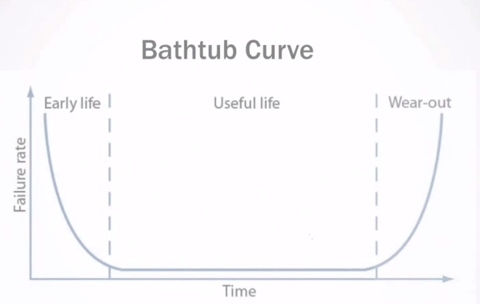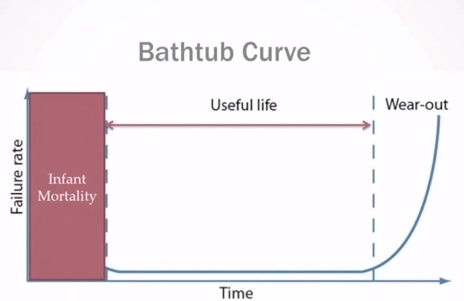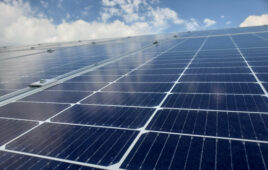
Daniel Ithurburn is a design engineer with Martifer Solar
Determining solar inverter reliablity involves taking a look at the failure rate (including the bathtub curve of failure), the infant mortality rate, the useful life of a solar inverter and the meantime between failure (MTBF).
Failure rate is defined as the frequency with which an engineered system fails as defined by reliability engineering.
The failure rate over time follows a curve that looks like a bathtub.

Infant mortality rate refers to the rate solar inverters fail early on depending on manufacturing process, shipping and different environmental conditions at the beginning of a solar project. To prevent infant mortality, run solar arrays under close watch for a short amount of time (known as the “burn-in period”) to ensure processes are normal. This ensures the array has stabilized and that it will begin to go through its useful life. A useful life for a string or central solar inverter is usually between 10 and 15 years.

The meantime between failure (MTBF) is not the average life span of a product, but rather the inverse of the failure rate only during the useful life period. It doesn’t take into account the infant mortality rate or the actual wear out period of a solar inverter.
If we look at the Bathtub curve again and define the failure rate as .01 occurrences per year, you can then calculate the MTBF to be 100 years. Conversely, if you take the inverse of the MTBF you will get the average failure rate. Though the MTBF in this case is 100 years, it is only valid during the useful life period, which often times is closer to your warranty period.

It’s also possible to do a comparative cost analysis between two solar inverters of different efficiency. To do so, you must take into account the additional balance of system (BOS) costs to get the same energy production. You must take the cost of the BOS and multiply it by the additional percentage of material needed (1 – the ratio of efficiencies) and add it to the cost of the solar inverter. This allows you to do a like comparison between two inverters.

If you want to get even more granular, you can use the software program PVsyst to calculate the specific production for the same array, with only the solar inverter changed. Replace the ratio of efficiencies with the ratio of specific production and compare values.

Daniel Ithurburn is a design engineer with Solar Power World Top 250 Contractor Martifer Solar. This article was taken from information Daniel presented in our webinar How To Choose And Care For Your Solar Inverter, which can be viewed here.
Want more? Try these articles:
Solar Inverter Operations & Maintenance Q&A
Reliability: Stable Inverters Power The Best Solar Solutions





The mtbf applies at 25 degrees Celsius. If it is hotter the life drops by half for every 10 degrees Celsius rise. Hence at 55 C the mtbf will be one eighth. Hence installation – keeping air circulation and separation from roof and PV panel is critical.
So what inverters are the most reliable? Enphase claims a 300 year MTBF. So if you have 300 inverters, you can expect one failure per year?
Mark
http://www.exactsolar.com